[ad_1]
In our quest to find the rarest Corals possible, somewhere in Indonesia we came across in a secret location sheltering a large field of Acropora ruselli, and boy, it was a sight to remember. This reef habitat was made up of a sloping rubble somewhere in Indonesia, covered by thousands of small fan shape like Acropora colonies in between 25m (75ft) and 45m (135 ft).
This particular species holds a special place in our heart, as it was named after our good friend and fellow coral connoisseur Russell Kelley, the producer of the very helpful The Coral Finder identification guides. The 4th version of this very useful coral taxonomy guide is on its way, and we can’t wait to scroll down its online version. It goes without saying that we are beyond jealous that that Russell has such a unique, peculiar Acropora named after him.
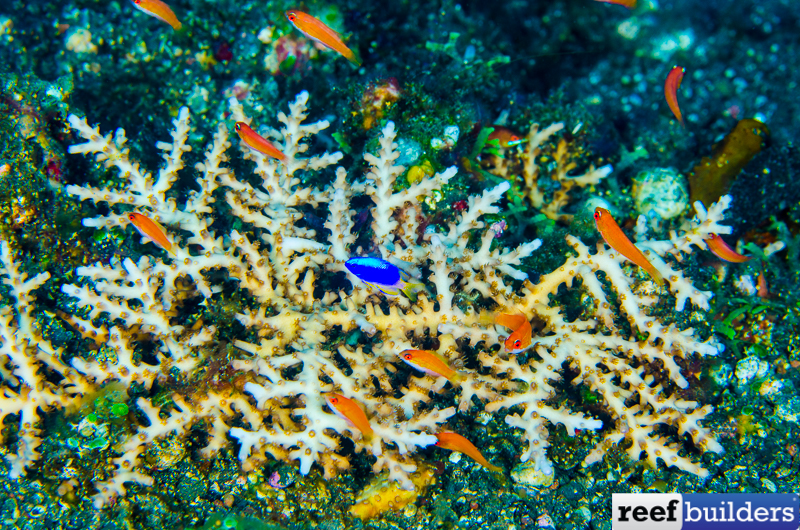
This coral was first discovered at Hibernian Reef in NW Australia. It has since been found in Sulawesi and east all the way to Flores in Indonesia. Veron even extends its range to Papua New Guinea, North Philippines and even all the way to Reunion Island in the Indian Ocean.
Description:
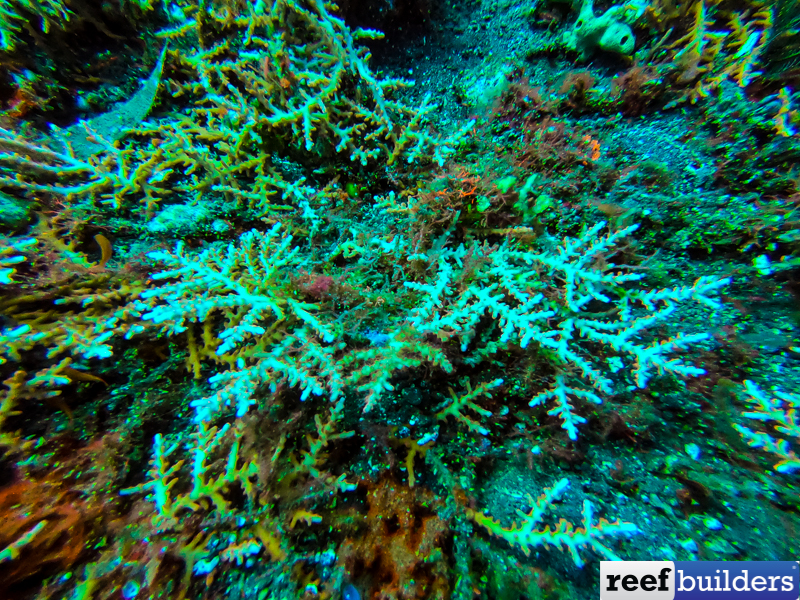
Colonies of Acropora russelli have fine matted branches which produce small, fan-like, 2 dimension plate colonies. Branches tend to be perpendicular to older branches although all branches are of similar thickness (approximately 5 mm). Axial and incipient axial corallites intergrade with radial corallites and are distinctively tubular, with truncated ends. Radial corallites project almost perpendicularly from branches and are tubular, uniform in shape and widely spaced.
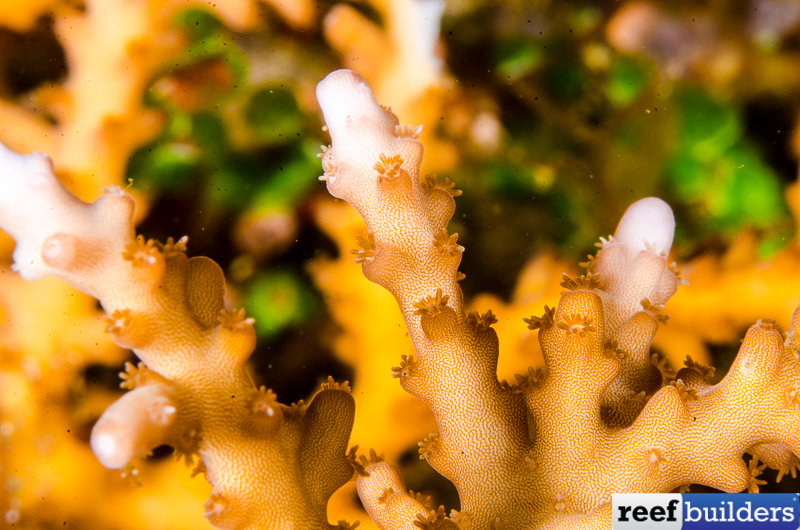
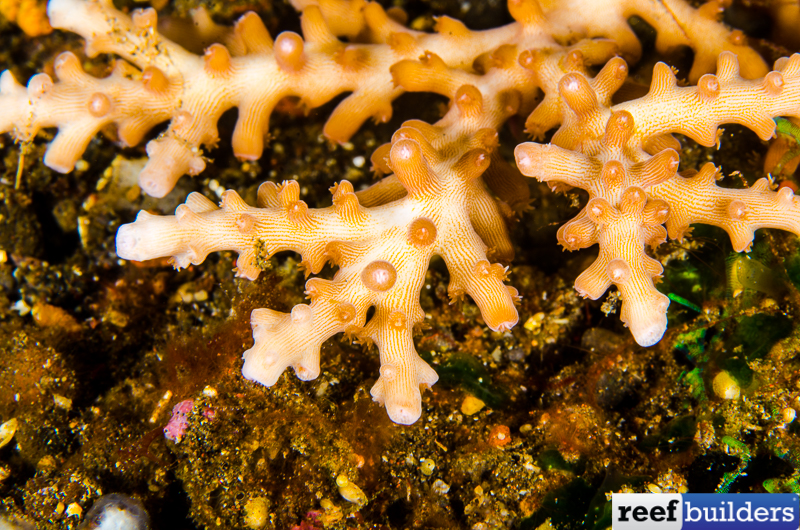
Habitat:
Just as we have found it, Acropora russelli lives on deep protected slopes, often rubble/sandy, and below 25 m (75 ft) of water. It forms large field down the slope, probably all belonging to the same colony by branch fragmentation migrating down slope.
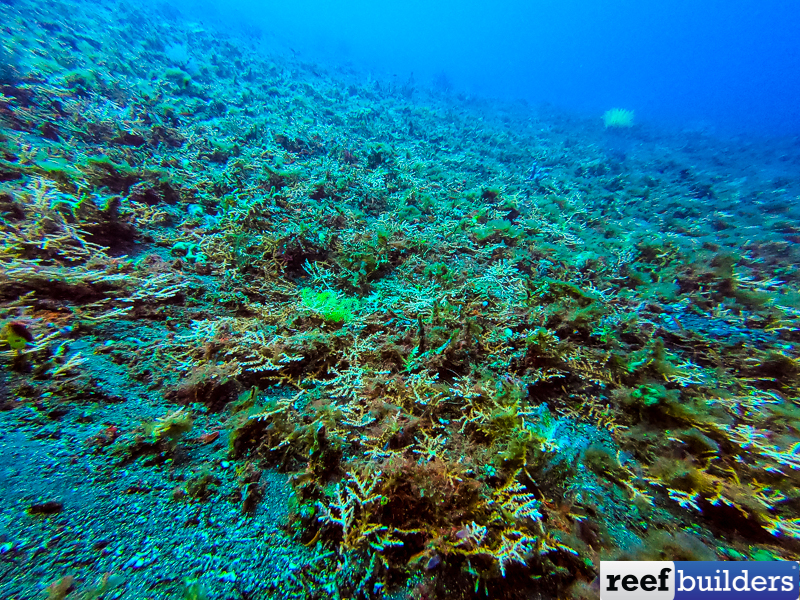
A parade of Bali deepwater acropora
Maintenance:
We don’t know much about the maintenance of this acro, as it has never been collected, but we suppose it’s pretty much like all deep water acros. Same maintenance as A. suharsonoi, A. lokani, A. subglabra, A. carduus, A. simplex or A. rongelapensis. Although we expect it growth a lot faster than those as it can form very large colony stands, which the others usually don’t.
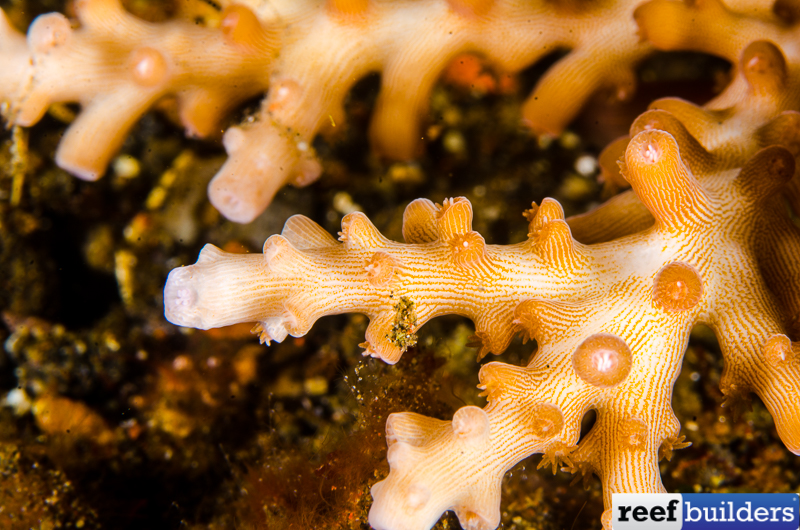
These deep water corals are keenly adapted to low light conditions and can probably get by with a PAR levels of between 50 to 100 umols/m2/s. Water quality should be as good as it gets, and flow should be low to medium. This Acropora is the perfect candidate to mix with deep LPS such as Acanthophyllia deshayesiana, Cynarina lacrymalis…
Coloration:
Ok, this coral is not really colorful, but we think it still holds great potential. Its texture and coloration is very similar to A. carduus, the Red Dragon. In the ocean, this coral is also brown, but under blue LED, reef tank light, it develops a nice deep pink/red pigment coloration. The tips would probably turn in the blue/purple/pink zone. Which would make a great combination.
Due to the conditions where Acropora russelli is found, if you placed this coral in a typical SPS tank it would promptly bleach out and die. Even an average reef tank would be too bright for this species and you would either have to acclimate it very slowly to normal light levels, or just enjoy it as a specialized low light Acropora species that you can grow among the chalice corals and corallimorphs.
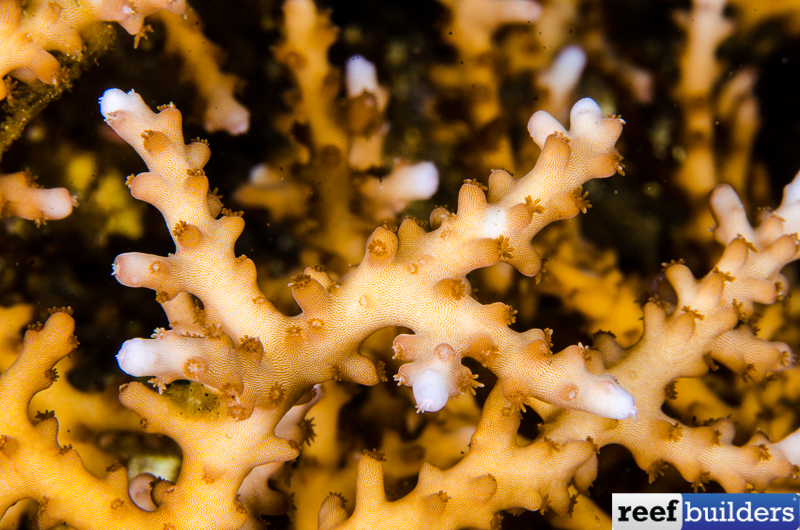
[ad_2]
Source link
